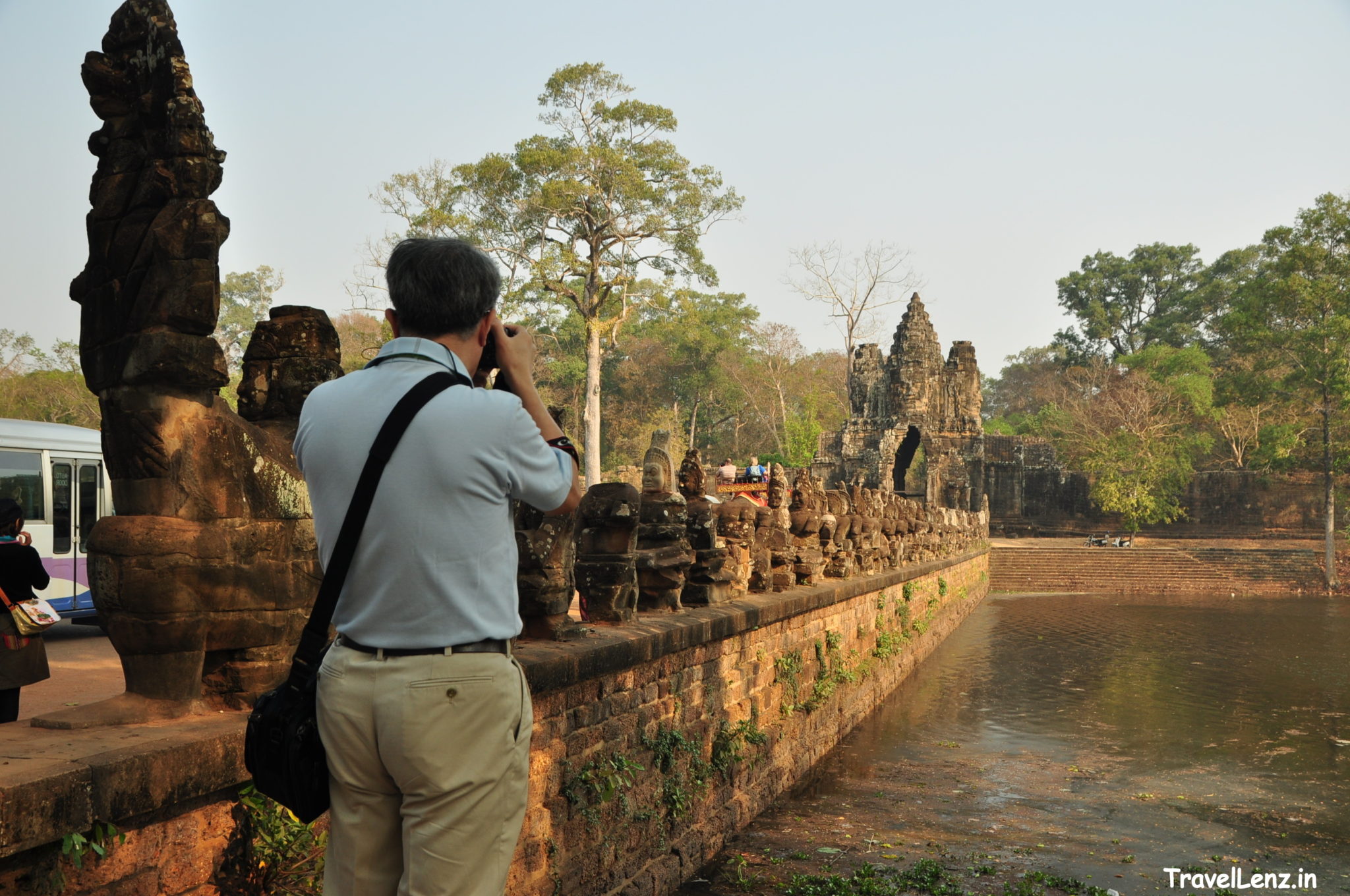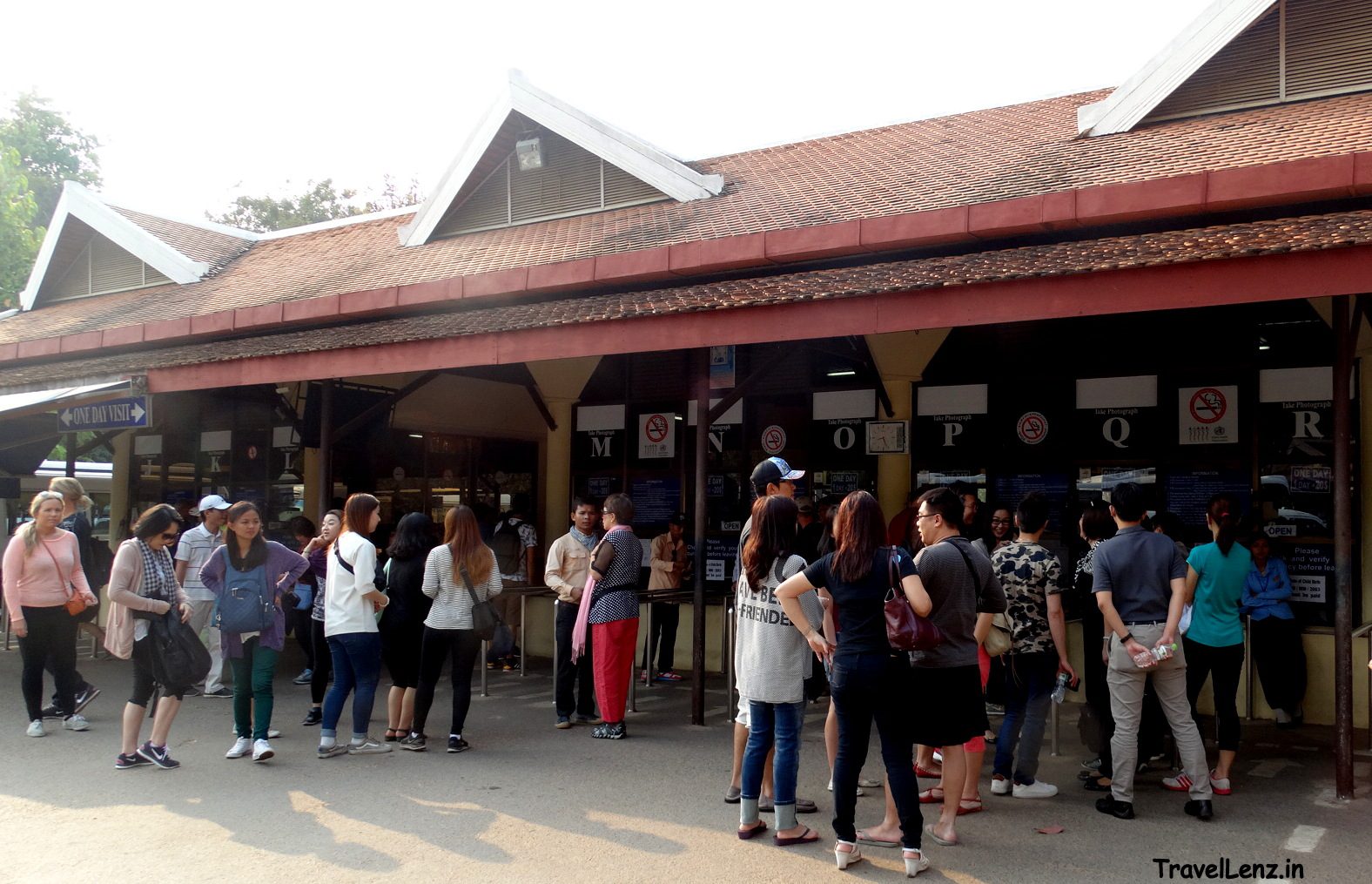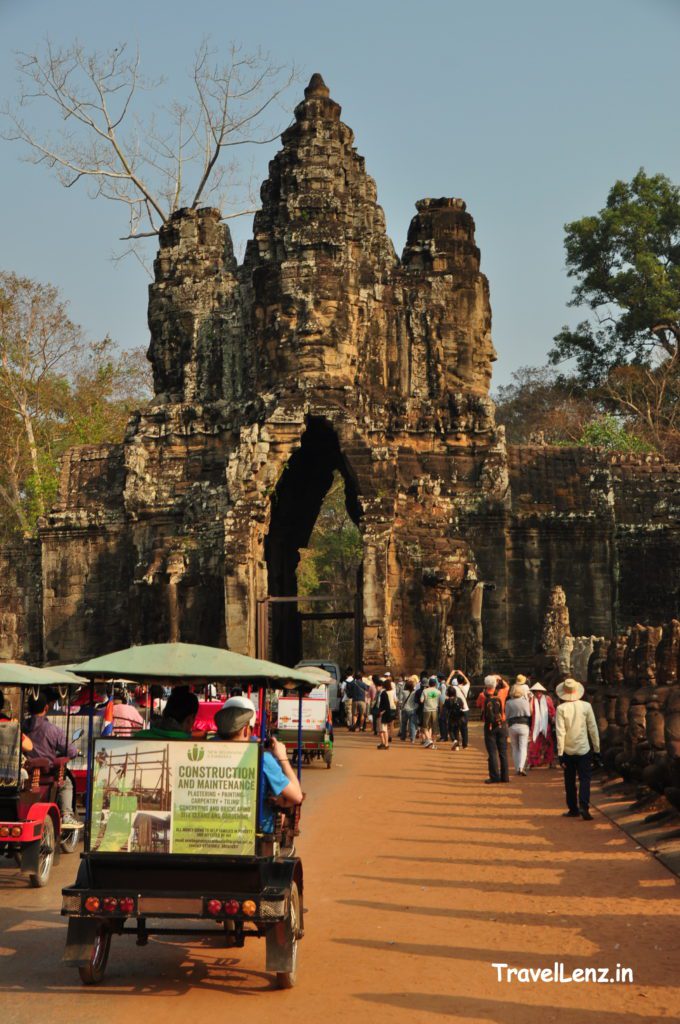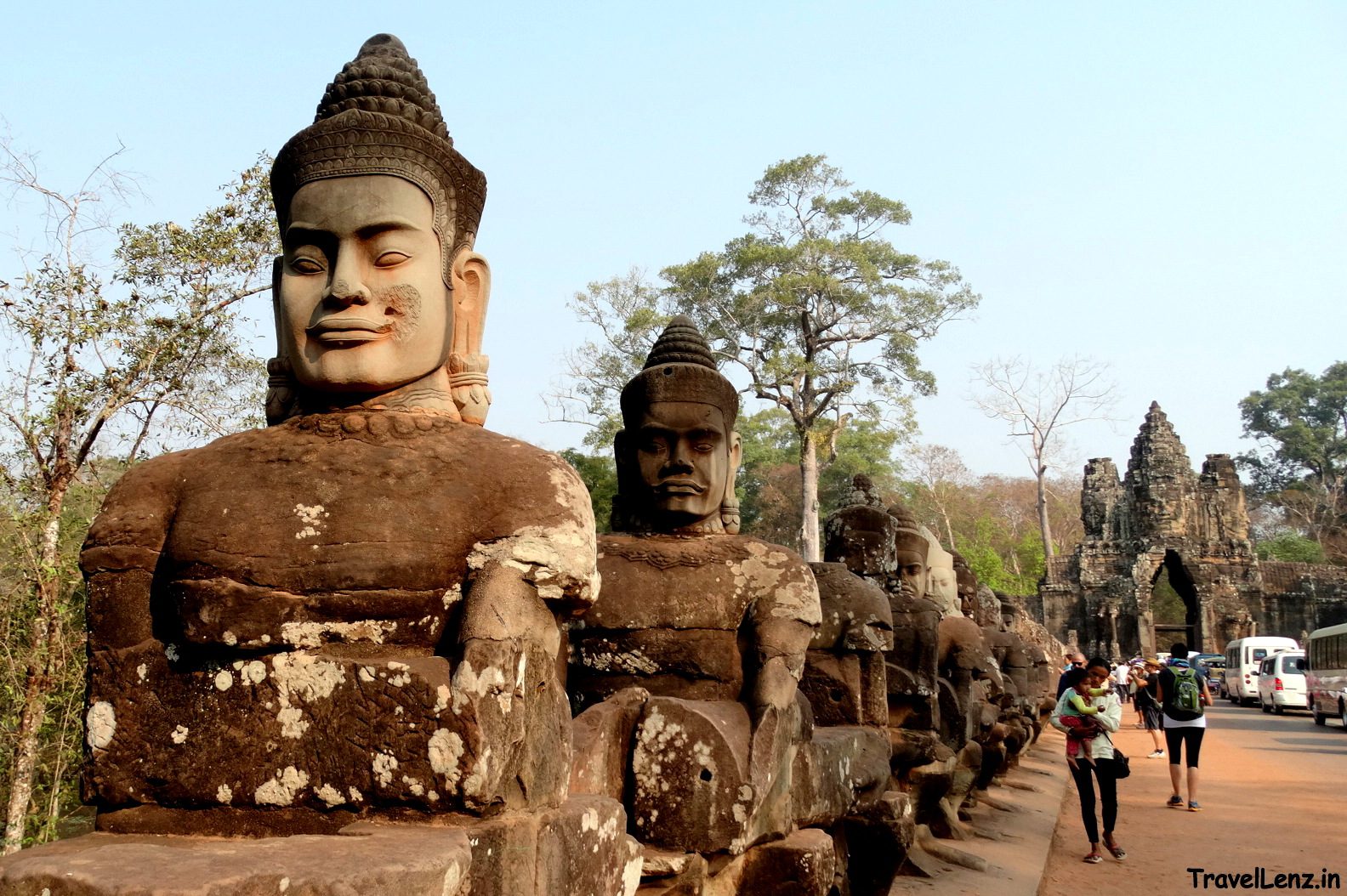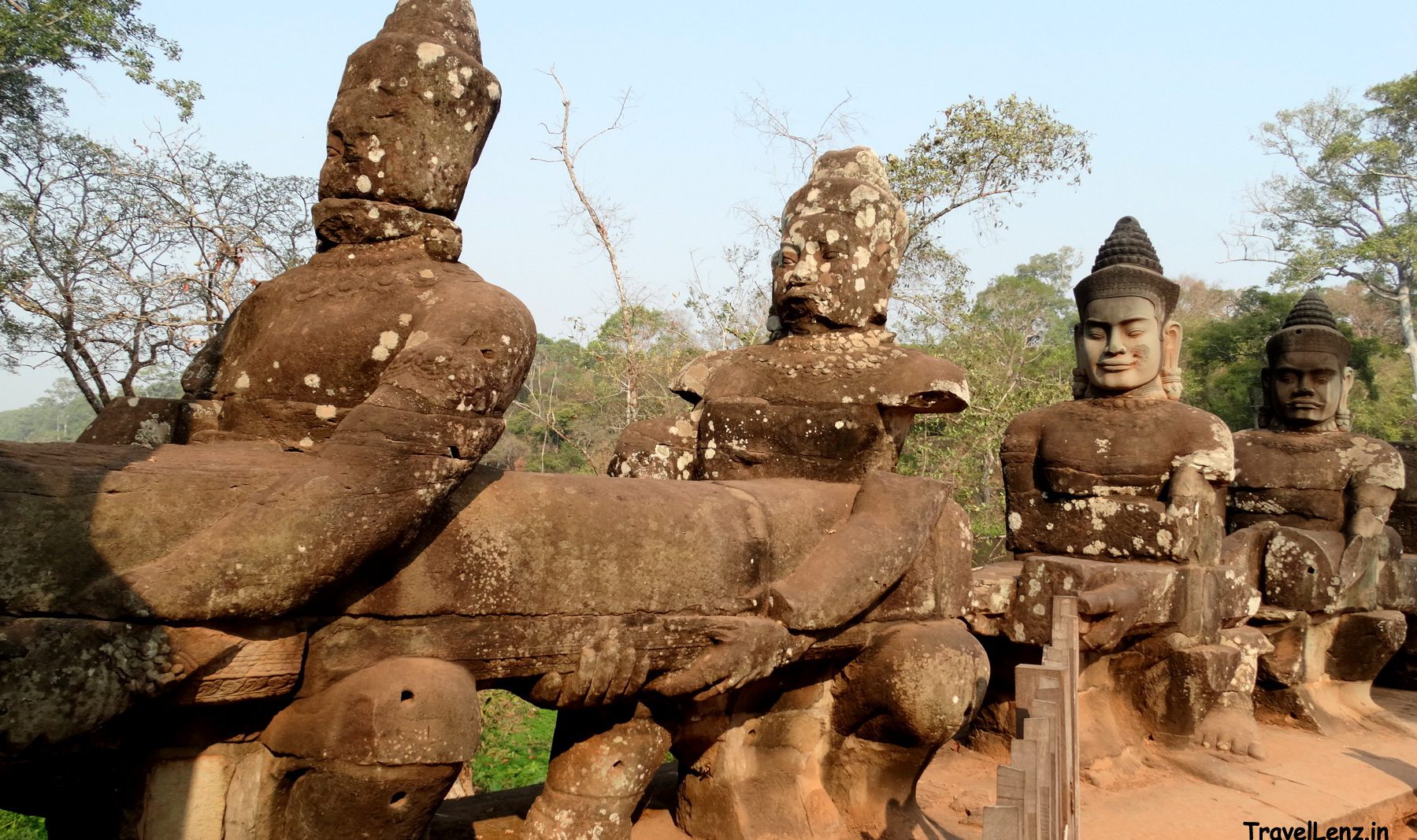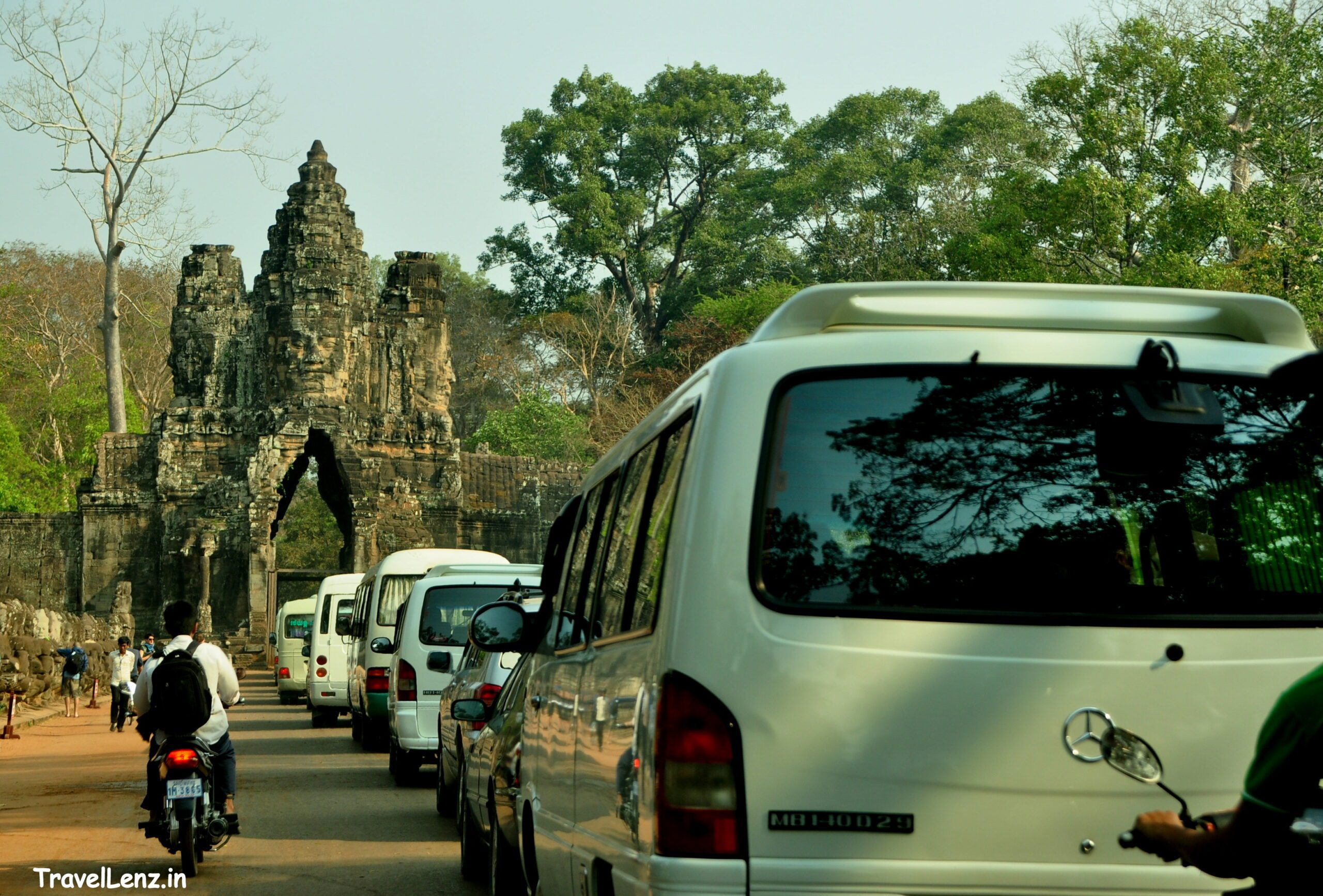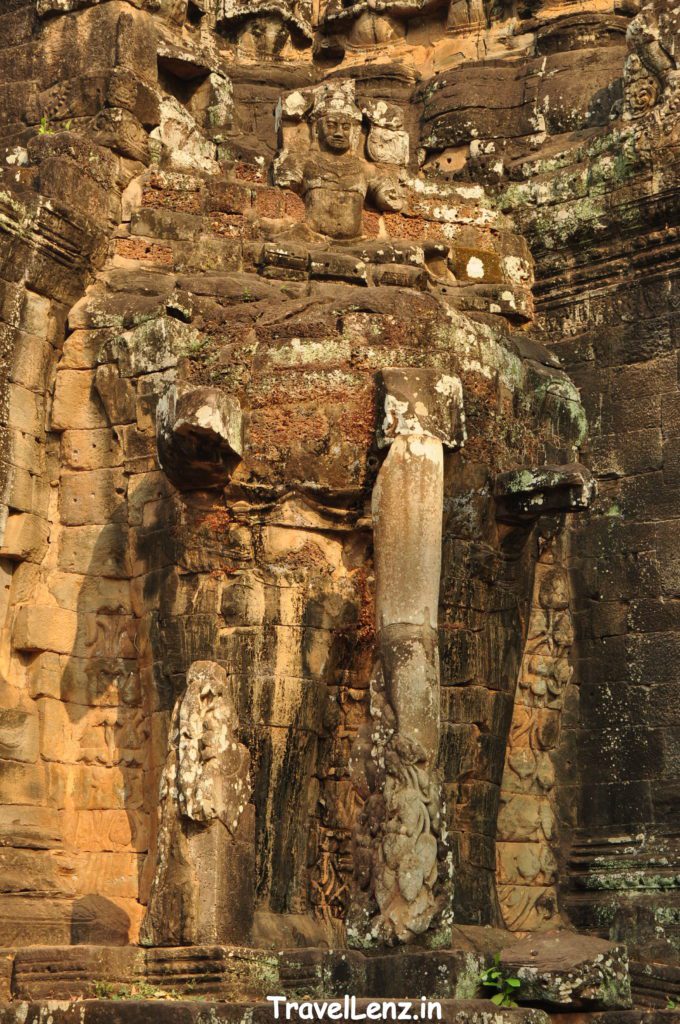Last Updated on May 20, 2021
Driving away from Siem Reap, we drove past Highway 6 that connects Siem Reap to Phnom Penh, the Cambodian capital. The Angkor complex lay about 7 km down a wide road with buildings on either side. Our first stop was the south gate tower of Angkor Thom.
Earlier, Tes Chhaya, our friend, and guide for the next 4 days was waiting outside our hotel at 8 am sharp – ready to crank up his SUV and our journey to the magical world of Angkor.
About 5 km into our drive, Tes drove the Lexus into a parking lot outside a low rise building. The multitude of tourists milling around indicated that we had reached Angkor Ticket Office or Angkor Enterprise where we were to pick up our entry passes.
We had opted for a 3-day pass costing USD 62. There were separate windows each for single, three day and week-long passes. It took us less than 5 minutes’ wait in an orderly queue, before a friendly clerk who snapped our photo and handed us our ticket to the heritage wonders that lay across those gates.
First glimpse of Angkor Wat
The road was peppered with tuk-tuks, bicycles, buses and the odd SUV – every one of these were tourists headed in the direction of the Angkor wonders. Towards our right, a water body came into sight. There is something about the moat that gives ancient monuments like AngkorWat the character it has when viewed from outside. It is this man-made water body that we found ourselves driving past as we braced for the first glimpse of the monument that we had come all this way for.
And, before long, the Angkor Wat came into view. The unmistakable, iconic UNESCO world heritage site; the scale of the monument was staggering – the whole sweep, as we encircled the moat in our car. That feeling of seeing a monument in flesh and blood, or stone and mortar rather, that we had researched over and over again and seen on the internet, for the first time was quite different.
Our first stop was even before we realised we had reached our first Angkor monument. Actually, we hadn’t. As we got out of the car, we found ourselves staring at a bridge like no other, leading up to a gate tower of the likes we hadn’t seen before.
Angkor Thom – The Gates of Angkor Thom
We were standing right in front of a road that led to the south gate tower of Angkor Thom, one of the main entry points to the larger Angkor complex.
Literally meaning – the Great City – Angkor Thom was the last capital city of the Khmer empire. The old capital, Yasodharapura, was destroyed by the Champa invaders and King Jayavarman VII wanted his new capital to be fortified. For that, he built an 8 m high wall around the 9 sq km city complex and encircled it by a 100-meter wide moat. He also built five gates with impressive face towers providing access to the city – four of the gates pointing towards the four cardinal directions and a fifth gate, an extra gate on the eastern wall, about 500 m north of the main eastern gate.
The South Gate Tower of Angkor Thom
The south gate tower of Angkor Thom, Tes explained, was the most impressive of all the gates, the best preserved and the busiest of them all. We had to cross a bridge to reach the gate tower – the bridge that stood over a moat had a story in itself. For most Indians and those familiar with Hindu mythology, there could be an immediate connection to what we saw instead of the railings on the bridge.
Devas and Asuras
In place of the railings were larger than life stone figures of Devas (Gods) and Asuras (Demons) pulling a giant snake. On the left were 54 Devas – some smiling, some serene and a few headless – and on the right were 54 Asuras – most grimacing and the rest headless – in a scene associated with the story of Palazhimathanam – the churning of the Milky Ocean.

The Devas and Asuras were holding onto Vasuki, the nine-headed snake and were working towards extracting Amrit – the nectar of immortality – by churning the ocean.
The feeling was surreal – for a few moments, we forgot about the hustle and bustle around. We were now entering the Khmer Kingdom – a peasant travelling to the city in the 12th century must have felt the same. He must have gaped open his mouth, just as we did, seeing the life-size Gods and Demons in the eternal tug-of-war standing with their enormous legs braced on the ground pulling the nine-headed snake as a rope and churning away the Ocean of milk. Can imagine the grandeur a few centuries ago.
Popular collectables
As we walked down the causeway we found that a lot of the heads had been restored and the stones looked structurally different from the lower parts of the statues. Tes mentioned that the original heads were destroyed or looted. Looting had become a profitable business in Cambodia after the Pot Pol era, and many statues were vandalised and their severed heads sold to collectors from abroad. A few of the recovered statues are now kept at the Angkor conservation museum.
Face towers
The causeway was quite crowded – cars, tuk-tuks, cycles, elephants, pedestrians. We managed to cut through the crowd and vehicles and reached the other side of the moat. The South Gate tower, like all the other gates, has a four-faced tower on the top. The faces on the tower represent the Bodhisattva of compassion – Avalokiteshvara. Another theory is that the faces bear the features of the king himself who is keeping a close watch over the city of Angkor Thom in all the directions. Quite impressive!!!
On both sides of the tower, towards the base are an elephant each. Airavata – the three-headed elephant is seen plucking lotus flowers with its trunks which forms the pillars of the tower. Lord Indra is seen on top of Airavata holding a thunderbolt in his lower left hand and a few smiling Apsaras are floating around.
This was our first meeting with the Apsaras – the heavenly dancing girls who were created as a sort of fortuitous byproduct of the churning of the Ocean of milk. While visiting the various temples in and around Angkor, get ready to be struck by these beautiful dancing girls depicted on the temple walls, doorways, pillars, and bas reliefs.
They are either dancing or poised as ready to dance with different hair arrangements, jewellery, clothing, floral decorations, and headgears. They’re often found in pairs, sometimes single, occasionally in small groups.
We joined the convoy of assorted vehicles and headed further into the Angkor kingdom. To be more precise we were headed towards the heart of the Angkor kingdom – our next stop was the Bayon temple.


